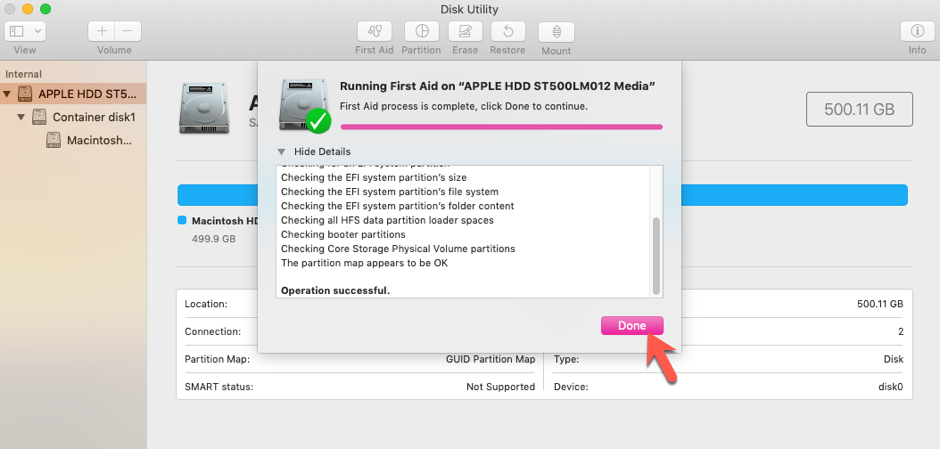Disk Utility can find and repair errors related to the formatting and directory structure of a Mac disk. Errors can lead to unexpected behavior when using your Mac, and significant errors might even prevent your Mac from starting up completely.
Before proceeding, make sure that you have a current backup of your Mac, in case you need to recover damaged files or Disk Utility finds errors that it can't repair.
Open Disk Utility
Disk First Aid Mac Download Full

In general, you can just open Disk Utility from the Utilities folder of your Applications folder. However, if your Mac doesn't start up all the way, or you want to repair the disk your Mac starts up from, open Disk Utility from macOS Recovery:
Download System 9.2.2 No Wait Patch for Mac to shortens Disk First Aid dialog wait. Download Disk Aid: System Cleaner for macOS 10.7 or later and enjoy it on your Mac. Disk Aid is a professional grade system utility app for keeping your Mac running at its very best. It is lovingly developed by the leaders in utility software, FIPLAB, who have created award-winning and extremely popular apps used by millions of Mac users. Disk First Aid is a free software utility made by Apple Inc. That was bundled with all computers running the classic Mac OS. This tool verifies and repairs a limited number of directory structure problems on any HFS or HFS Plus hard disk or volume. Disk First Aid is a very simple tool, with it only being able to detect and repair directory.
- Determine whether you're using a Mac with Apple silicon, then follow the appropriate steps:
- Apple silicon: Turn on your Mac and continue to press and hold the power button until you see the startup options window. Click the gear icon labeled Options, then click Continue.
- Intel processor: Turn on your Mac, then immediately press and hold these two keys until you see an Apple logo or other image: Command (⌘) and R.
- You may be asked to select a user you know the password for. Select the user, then click Next and enter their administrator password.
- From the utilities window in macOS Recovery, select Disk Utility and click Continue.
- Answer 1: Mac has default tools to repair disk, partition and file system errors automatically, such as First Aid in Disk Utility and more. When the process finished the exit code, it means everything goes on well with the Mac. But if you are notified with “The volume could not be verified completely. File system check exit code is 8.
- Disk First Aid 8.6.1, despite having been originally released for Mac OS 9.0.4, can still run on Mac OS 8.1 on a 68040. It is the last version to run on a 68k Mac. Later versions of Disk First Aid that shipped with Mac OS 9.x were exclusive to PowerPC.
Select your disk in Disk Utility
Choose View > Show All Devices (if available) from the menu bar or toolbar in Disk Utility.
The sidebar in Disk Utility should now show each available disk or other storage device, beginning with your startup disk. And beneath each disk you should see any containers and volumes on that disk. Don't see your disk?

In this example, the startup disk (APPLE HDD) has one container and two volumes (Macintosh HD, Macintosh HD - Data). Your disk might not have a container, and it might have a different number of volumes.
Repair volumes, then containers, then disks
For each disk that you're repairing, start by selecting the last volume on that disk, then click the First Aid button or tab.
In this example, the last volume on the disk is Macintosh HD - Data.
Click Run to begin checking the selected volume for errors.
- If there is no Run button, click the Repair Disk button instead.
- If the button is dimmed and you can't click it, skip this step for the disk, container, or volume you selected.
- If you're asked for a password to unlock the disk, enter your administrator password.
After Disk Utility is done checking the volume, select the next item above it in the sidebar, then run First Aid again. Keep moving up the list, running First Aid for each volume on the disk, then each container on the disk, then finally the disk itself.
In this example, the repair order is Macintosh HD - Data, then Macintosh HD, then Container disk3, then APPLE HDD.
Macbook Pro No Startup Disk
/FirstAidInfo-57227ceb5f9b58857de3c052.jpg)
If Disk Utility found errors that it can't repair
If Disk Utility found errors that it could not repair, use Disk Utility to erase (format) your disk.
If your disk doesn't appear in Disk Utility
If Disk Utility can't see your disk, it also can't see any containers or volumes on that disk. In that case, follow these steps:
- Shut down your Mac, then unplug all nonessential devices from your Mac.
- If you're repairing an external drive, make sure that it's connected directly to your Mac using a cable that you know is good. Then turn the drive off and back on.
- If your disk still doesn't appear in Disk Utility, your Mac might need service. If you need help, please contact Apple Support.